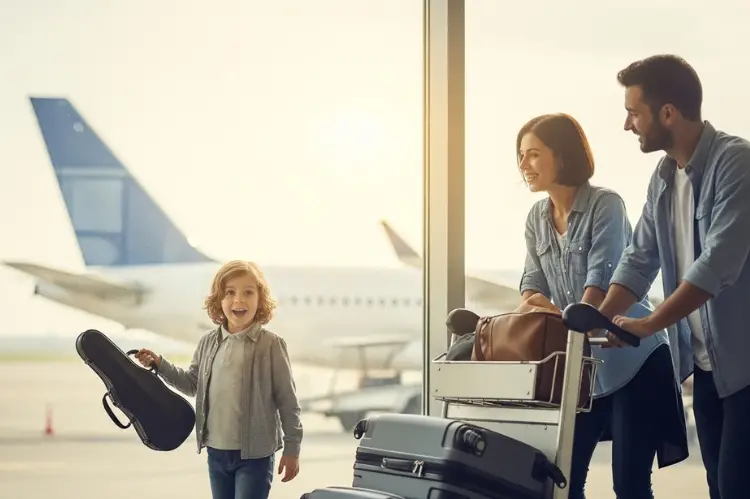Picture this: you’re at the airport, juggling carry-on bags, your child’s backpack, and that oddly-shaped violin case while trying to keep your budding musician calm before their first competition or music camp. Sound familiar? If you’re parenting a young violinist, chances are you’ve either lived this scenario or you’re about to.
Traveling with a violin might seem daunting, but with the right preparation, it can be as smooth as your child’s bow technique (well, almost). After countless trips with my daughter and her violin – from local competitions to summer music festivals – I’ve learned that success lies in the details. Here’s everything you need to know to make traveling with your young violinist stress-free for everyone involved.
Choosing the Right Case: Your Violin’s Best Friend
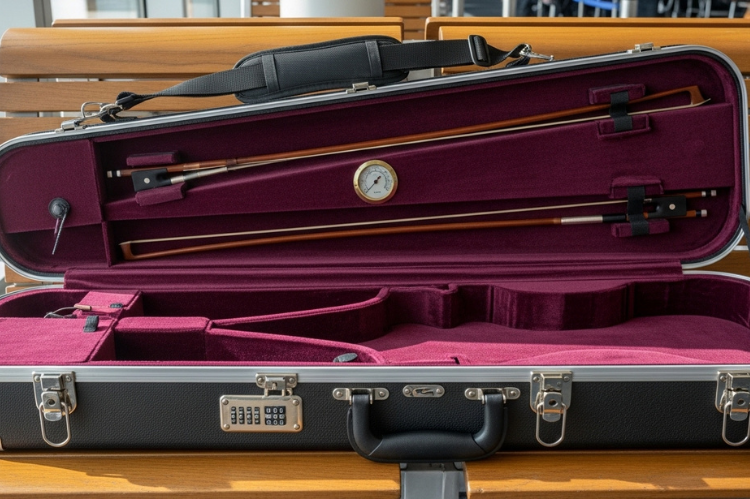
Your violin case is your first line of defense, so invest wisely. For travel, you want a case that balances protection with portability. Hard shell cases offer the best protection but can be heavy for younger children to manage. Consider a high-quality suspension case – it provides excellent protection while being lighter than traditional hard cases.
Look for cases with:
- TSA-approved locks (you’ll thank me later)
- Comfortable shoulder straps (your child will be carrying this through airports)
- Weather-resistant exterior
- Secure bow holders (loose bows are damaged bows)
If you’re in the market for a quality case, sites like Great Violin Cases offer a wide selection of travel-appropriate options with detailed specifications to help you compare features and protection levels.
Don’t forget to pack a hygrometer in the case. Temperature and humidity changes during travel can wreak havoc on wooden instruments, and you’ll want to monitor conditions.
Packing Like a Pro: The Essentials Checklist
Beyond the obvious violin and bow, here’s what should always travel with your young musician:
In the violin case:
- Extra strings (they break at the worst possible times)
- Rosin
- Shoulder rest or chin rest if removable
- Small screwdriver for adjustments
- Tuner and metronome (apps work, but backups never hurt)
- Music scores in a protective folder
In your carry-on:
- Humidification system (Dampit or similar)
- Microfiber cloth for cleaning
- Contact information for local violin shops at your destination
- Photos of the instrument (for insurance purposes)
Documentation: This is crucial for expensive instruments. Carry a copy of your instrument’s appraisal, insurance policy, and any certificates of authenticity. For international travel, you might need a CITES permit if your violin contains certain types of wood.
Know Your Rights: Airlines and Musical Instruments
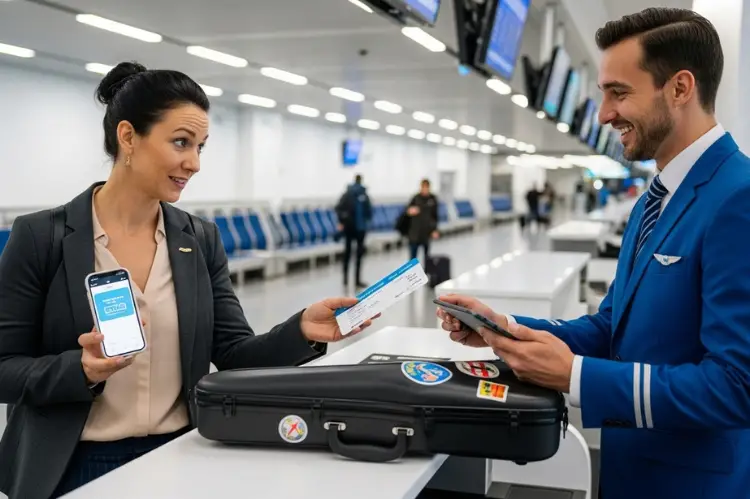
First things first – you have legal protections. The FAA Modernization and Reform Act requires airlines to allow small musical instruments as carry-on baggage, provided they fit in overhead bins or under seats. This is music to any parent’s ears because checking a violin is rarely a good idea.
Before booking, call the airline directly to discuss your child’s instrument. While a full-size violin is about 24 inches long (fitting most overhead bins), fractional violins that younger children play are even more manageable. Get any promises in writing or documented in your reservation notes.
Pro tip: Some airlines offer priority boarding for passengers with musical instruments. It’s worth asking – getting on early means better overhead bin space and less stress.
Airport Navigation: Making Security Smooth
Security checkpoints can be nerve-wracking with an instrument. Here’s how to breeze through:
Before you go:
- Arrive extra early (add 30 minutes to your usual buffer)
- Remove all accessories from the case before reaching security
- Have your documentation easily accessible
At security:
- The violin will need to be screened separately
- Be prepared for additional inspection – TSA agents might need to open the case
- Stay calm and polite; most agents are accommodating when you’re prepared
I always let my daughter handle interactions with security when appropriate. It helps her feel more confident and responsible for her instrument, plus TSA agents often enjoy meeting young musicians.
Hotel and Accommodation Tips
Once you’ve arrived safely, proper storage continues to matter:
- Request a room away from heating/cooling vents
- Never store the instrument near windows or exterior walls
- Use the room’s closet for stable temperature
- If staying with host families, communicate your instrument’s needs clearly
Pro tip for early arrivals or layovers: If you arrive hours before hotel check-in or have a long layover, consider using a luggage storage service like those covered in this bounce luggage storage guide. Being able to securely store your regular luggage means you only need to carry your child’s violin case while exploring the city or grabbing a meal – much more manageable for busy parents.
Managing Your Young Musician’s Stress
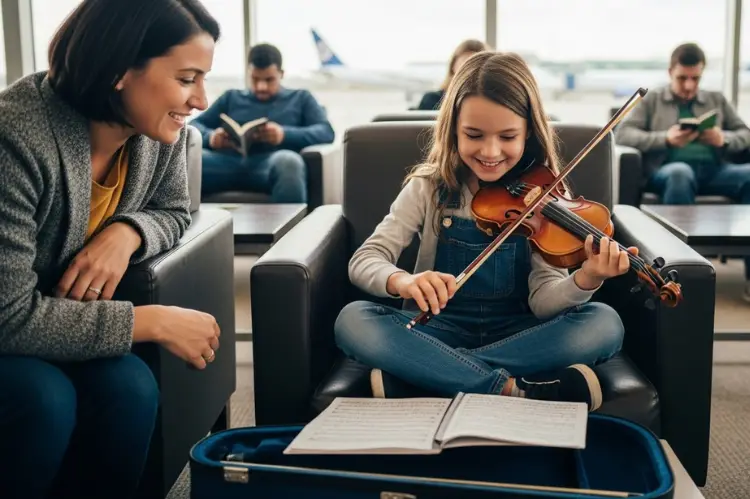
Let’s be honest – traveling with instruments creates anxiety for kids. They’re worried about their violin, excited about their destination, and often dealing with performance nerves all at once.
Preparation strategies:
- Practice at home with the instrument in its case, simulating travel conditions
- Role-play airport scenarios
- Create a travel checklist your child can use independently
- Pack comfort items in easily accessible pockets
During travel:
- Let your child be responsible for carrying their instrument when safe and practical
- Use travel time for music theory review or listening to pieces they’re working on
- Bring non-music activities too – sometimes they need a mental break
International Travel: Extra Considerations
Crossing borders with musical instruments requires additional planning. Research your destination’s customs requirements well in advance. Some countries have restrictions on certain wood types or require special permits.
Essential steps:
- Contact the embassy or consulate of your destination country
- Research wood species restrictions (especially important for older instruments)
- Understand duty and tax implications
- Consider travel insurance that specifically covers musical instruments
Climate Control: Protecting Your Investment
Instruments hate sudden temperature and humidity changes. When traveling between climates, plan for acclimatization:
- Never leave the violin in a car (not even briefly)
- Allow the instrument to adjust gradually to new environments
- Consider a travel humidifier for dry climates
- Monitor humidity levels with a hygrometer
I learned this lesson the hard way during a winter trip to Colorado. We went from humid Florida to bone-dry mountain air, and my daughter’s violin developed a soundpost crack. Now, we always pack humidification systems and take time to acclimatize instruments gradually.
Hotel and Accommodation Tips
Once you’ve arrived safely, proper storage continues to matter:
- Request a room away from heating/cooling vents
- Never store the instrument near windows or exterior walls
- Use the room’s closet for stable temperature
- If staying with host families, communicate your instrument’s needs clearly
Building Confidence Through Experience
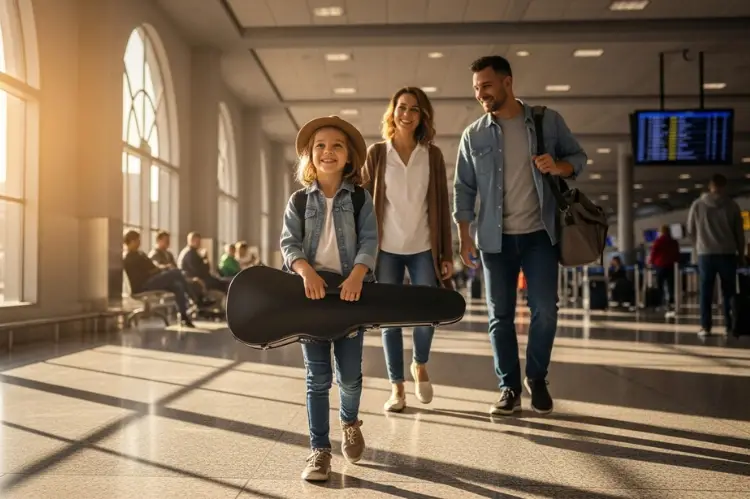
Each trip your child takes with their violin builds confidence and responsibility. Start with shorter trips close to home, then gradually work up to longer journeys. By the time they’re traveling to major competitions or music camps, handling their instrument during travel will be second nature.
Remember to celebrate the small victories – successfully navigating their first airport security check, remembering to pack extra strings, or calmly handling a delayed flight while keeping their instrument safe.
Emergency Preparedness: When Things Go Wrong
Despite best preparations, sometimes issues arise. Having a plan helps everyone stay calm:
- If strings break: This is why you packed extras. Use it as a teaching moment about preparation and problem-solving.
- If the case gets damaged: Document everything with photos before opening. Check the instrument carefully and contact your insurance company if needed.
- If flights get cancelled: Protect the instrument first, then worry about rebooking. Avoid temperature extremes while waiting.
The Bigger Picture: Life Lessons Through Travel
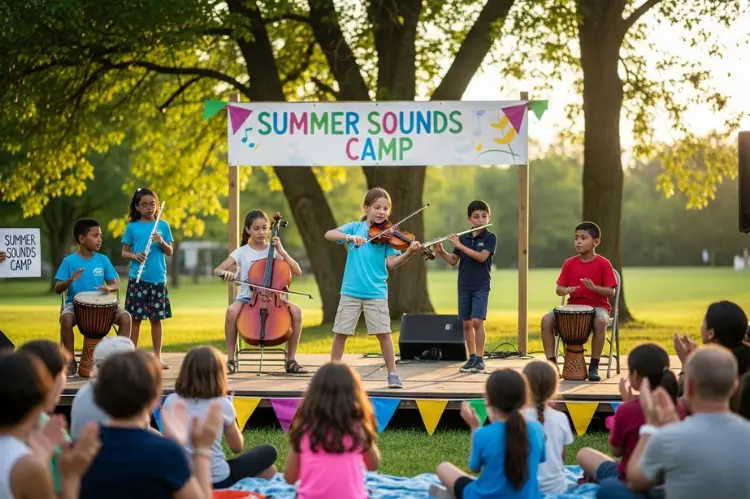
Traveling with a violin teaches children responsibility, planning skills, and grace under pressure – qualities that serve them well beyond music. My daughter has learned to advocate for herself, prepare thoroughly, and stay calm when plans change. These are life skills disguised as travel logistics.
Consider road trips for regional competitions: Not every musical journey requires air travel. For competitions and festivals within driving distance, road trips can be less stressful for both you and your young musician. You’ll have complete control over the instrument’s environment, no security screenings to navigate, and the flexibility to pack additional gear. For comprehensive guidance on making family road trips smooth and enjoyable, check out these family road trip tips that apply whether you’re heading to a music camp or any other destination.
Every trip also opens their world to new musical experiences. Whether it’s hearing a different orchestra, meeting young musicians from other regions, or performing in a new venue, travel broadens their musical horizons in ways that practice rooms can’t match.
Final Thoughts: Making Music on the Move
Yes, traveling with your young violinist’s instrument requires extra planning and patience. But watching your child confidently navigate airports with their violin, perform in new places, and connect with other young musicians makes every bit of preparation worthwhile.
Start planning early, pack smart, stay flexible, and remember that each journey is building your child’s confidence and independence. Before you know it, they’ll be handling travel logistics like a seasoned professional musician – which, in many ways, they’re already becoming.
The music world is vast and wonderful, and your careful preparation today is opening doors to incredible experiences tomorrow. Safe travels, and may your journeys be filled with beautiful music and confident young musicians.
Read Next: Family Travel Tips for Stress-Free Global Adventures

